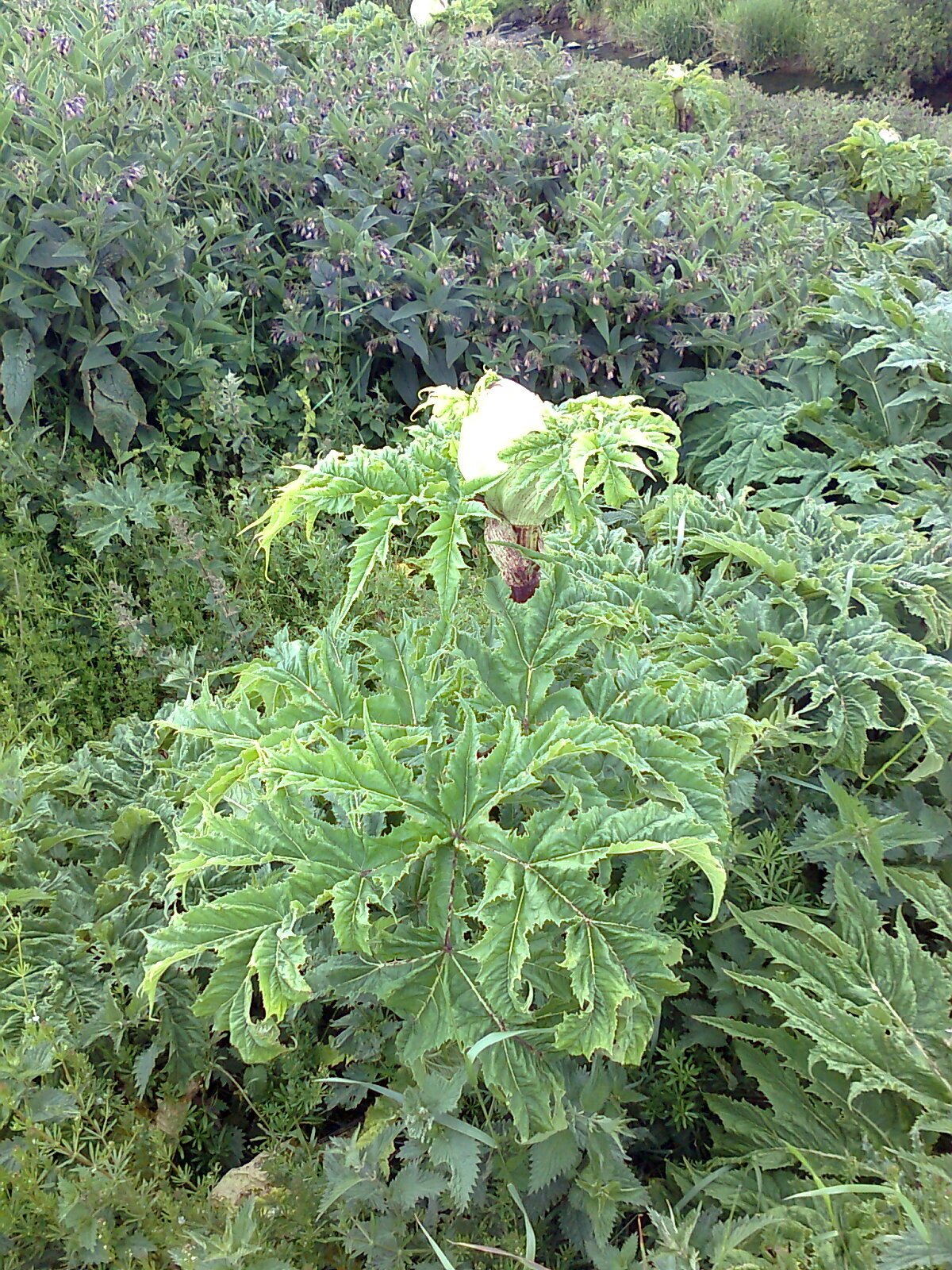INVASIVE NON-NATIVE SPECIES
Non-native species are animals or plants that have been introduced into an area where they do not naturally occur. They become invasive when they are established and take over the habitats of other species and/or disrupt the ecosystem. They are often known as ‘INNS’.
Scotland’s Environment website has more information on some of these species especially ones where they want people to support management, including eradication.
Invasive Species in the River Eden catchment
The River Eden has several plant and animal INNS including:
For each of these species here are some recommendations about what anglers can do to help with control or eradication.
Animals
North American Signal Crayfish
North American Signal Crayfish
There have been confirmed occurrences of this species on the River Eden, the Fernie Burn near Springfield and as far upstream as Dunshalt. You can view the distribution on this interactive map. This lobster-like species was introduced in the 1970s to be farmed for food but escaped into water courses and has rapidly spread. The North American signal crayfish is a great threat to Scotland’s native fish and other freshwater wildlife. It is a voracious predator and competes for space in rivers and lochs with native fish, particularly juvenile salmon and trout. They also cause great damage by burrowing into spawning beds and riverbanks.
What to do: the answer to this one is far from simple! Luckily the otters on the river love them! This link has details of what to do if you see or catch one.
More detailed information can be found here.
Pink Salmon
Pink Salmon
Pink Salmon
The fish photographed here was caught on the Eden in season 2021 by Jim Lindsay and correctly identified as a pink salmon. It also showed some other damage likely from cormorant attack. A key to identification of fresh run pink salmon is the large spots on the tail and a dark mouth.
See below for more information about pink salmon and what to do if you catch or see one. It was reported to the authorities as per the advice below.
The Pink Salmon or Humpback, is native to Pacific North America and Asia. However, from the 1950s onwards, there have been several releases from Russia into the White Sea Basin and then into the Atlantic, spreading down the coast of Norway into the North Sea. It runs in separate populations in odd and even years with the ‘odd year’ population currently more numerous. So far it is not clear what the impact is on our river ecosystems in Scotland but there have been recorded catches on the Eden and there are concerns over impacts on native salmon and sea trout.
What to do: this Fisheries Management Scotland advice leaflet for 2021 explains how to identify them and what to do if you see or catch one. Essentially it says that - only if you are confident in your identification – you should dispatch it humanely, freeze and retain it and report to your District Salmon Fisheries Board who may wish to examine it. Tel. 01738 583733 email: d-summers@btconnect.com. You can also use the Fisheries Management Scotland Pink Salmon web page to report a catch or sighting.
This webinar by the Scottish Invasive Species Initiative provides even more detail if you are interested in finding out more.
American Mink
American Mink
Mink belong to a group of animals called mustelids which includes badgers, otters, stoats, weasels, pine martens and polecats. They can be mistaken for otters but are much smaller – about the size of a polecat or ferret. They are one of the key target species for the Scottish Invasive Species Initiative as they are very damaging to populations of nesting birds and water voles. This guide from GB Non-native Species Secretariat is helpful for identification and information.
What to do: If you see one, you can help by reporting it at this link.
Plants
Giant Hogweed
Giant Hogweed
*** BEWARE - CAN CAUSE SEVERE BURNS AND BLISTERS ***
Giant Hogweed is a key target species for the Scottish Invasive Species Initiative (SISI) but as the Eden is not in the SISI project area, it is not managed by them.
What to do: EAA members have been involved in some giant hogweed control, but it is not recommended that anglers try to deal with it as it can cause severe burns under sunlight. However, it can be reported to Fife Council Environmental Health Public Health Protection Team Tel 03451 555550. The Association will continue to collaborate with landowners on the river and other groups to find ways to control giant hogweed. Through these efforts we hope to make access to the river safe for anglers and the community in general.
Himalayan Balsam
Himalayan Balsam
Himalayan Balsam is a tall, attractive plant with pink flowers that grows in dense stands and it shades out and crowds out many native species. It is another key target species for the Scottish Invasive Species Initiative. It spreads via seeds floating down river and germinates easily in soft, muddy river banks but is highly adaptable and can grow in varied habitats including woodlands, gardens, agricultural ditches and verges.
What to do: EAA has been involved already in balsam pulling events with Sustainable Cupar. Look out for future events on the EAA website and Facebook page. Support is always welcome. Anglers can also uproot the easily identified plants and remove them or leave them hanging over a branch so that they cannot root again. This is best done before seeds form between May and August.





